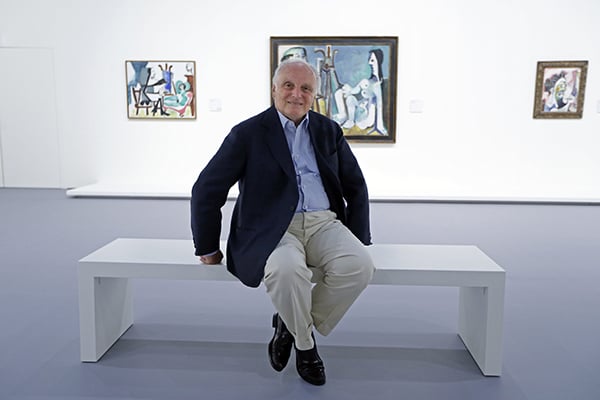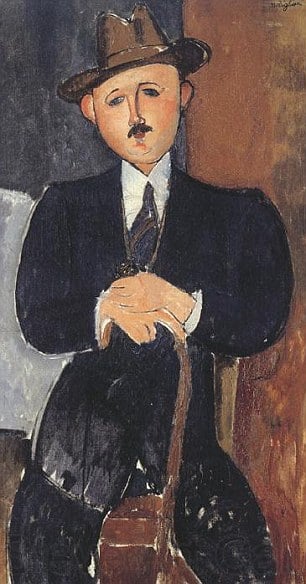Analysis
David Nahmad Denies Modigliani Painting Is Nazi Loot
He says he'll give the painting back if it is proven to be looted.

Photo: Valery Hache, AFP Photo/Getty Images.
He says he'll give the painting back if it is proven to be looted.

Amah-Rose Abrams

Art world supremo David Nahmad has spoken out about the scandal surrounding his Amedeo Modigliani painting Seated Man with Cane (1918), denying claims that the work is Nazi loot.
Nahmad, in an uncharacteristically public move, spoke to several reporters last week in an effort to put his side of the story across, after the Panama Papers revealed that he was the true owner of the disputed painting and much negative publicity ensued.
“People say, ‘Oh, David stole it; he should give it back immediately,’” Nahmad told the New York Times in Paris. “Looted art, hidden art—they made me look like a crook instead of doing real battle in the court,” he said. “If it’s proven that this painting is looted by the Nazis, I will give it back,” he added later in the interview.
Mondex Company, a firm that specializes in retrieving disputed works, has for some time been trying to prove that Seated Man with Cane—a portrait of a wealthy chocolate merchant, currently worth an estimated $25 million according to AFP—was stolen by the Nazis from the British art dealer Oscar Stettiner, who fled Germany and came to the UK during the Second World War.
Stettiner’s grandson, Philippe Maestracci, with the help of Mondex, has been trying for over five years to prove that the painting in fact rightfully belongs to him, through repeated court actions in New York.
Their campaign received a boost when the company that owns the painting, International Art Center, was revealed in the Panama Papers to be owned by David Nahmad, though he had earlier denied ownership.

Amedeo Modigliani, Seated Man with a Cane (1918).
“The International Art Center is me personally,” David Nahmad told the New York Times, adding that he had concealed this information for security reasons.
The Jewish dealer—whose family collection contains around 4,500 works, 300 of which are by Pablo Picasso and which is worth at least $1 billion, according to Forbes—says he would never deal in art he knew to be looted by the Nazis.
A painting by Modigliani, which Mondex claims was in fact Seated Man with Cane, changed hands in Paris in July 1944, listed as a self-portrait of the artist. The work was sold at the French auction house Drouot, along with other works that belonged to Stettiner. The so-called self-portrait was also listed as belonging to Stettiner at the 1930 Venice Biennale.
According to Nahmad, the price fetched for the painting in 1944—16,000 francs or $3,375—was too low for a Modigliani such as this one, even in an anonymous sale during wartime. Yet, when Art Center International tried to sell the painting in 2008, the provenance was listed as perhaps having belonged to Stettiner, the NYT reports.
Nahmad cites a document he feels exonerates him, stating that Stettiner tried to recover the Modigliani belonging to him after the war had ended in 1947, and referred to it as a self-portrait of the artist, in a notation taken by a court bailiff. He believes that this proves that the work in question is in fact a different painting.
However, James Palmer of Mondex feels that the two paintings are indeed the same. “I think the evidence is overwhelming,” he told the NYT. He has whipped up support to the extent that, when the painting was revealed to belong to Nahmad, it was briefly seized by the Swiss authorities.
Nahmad has lent the disputed work to many institutions since buying it in 1996, including the Jewish Museum in 2004, a fact he cites in his defence. “If you had any doubt about looted art, would you really lend it to a Jewish museum?” he told the NYT.